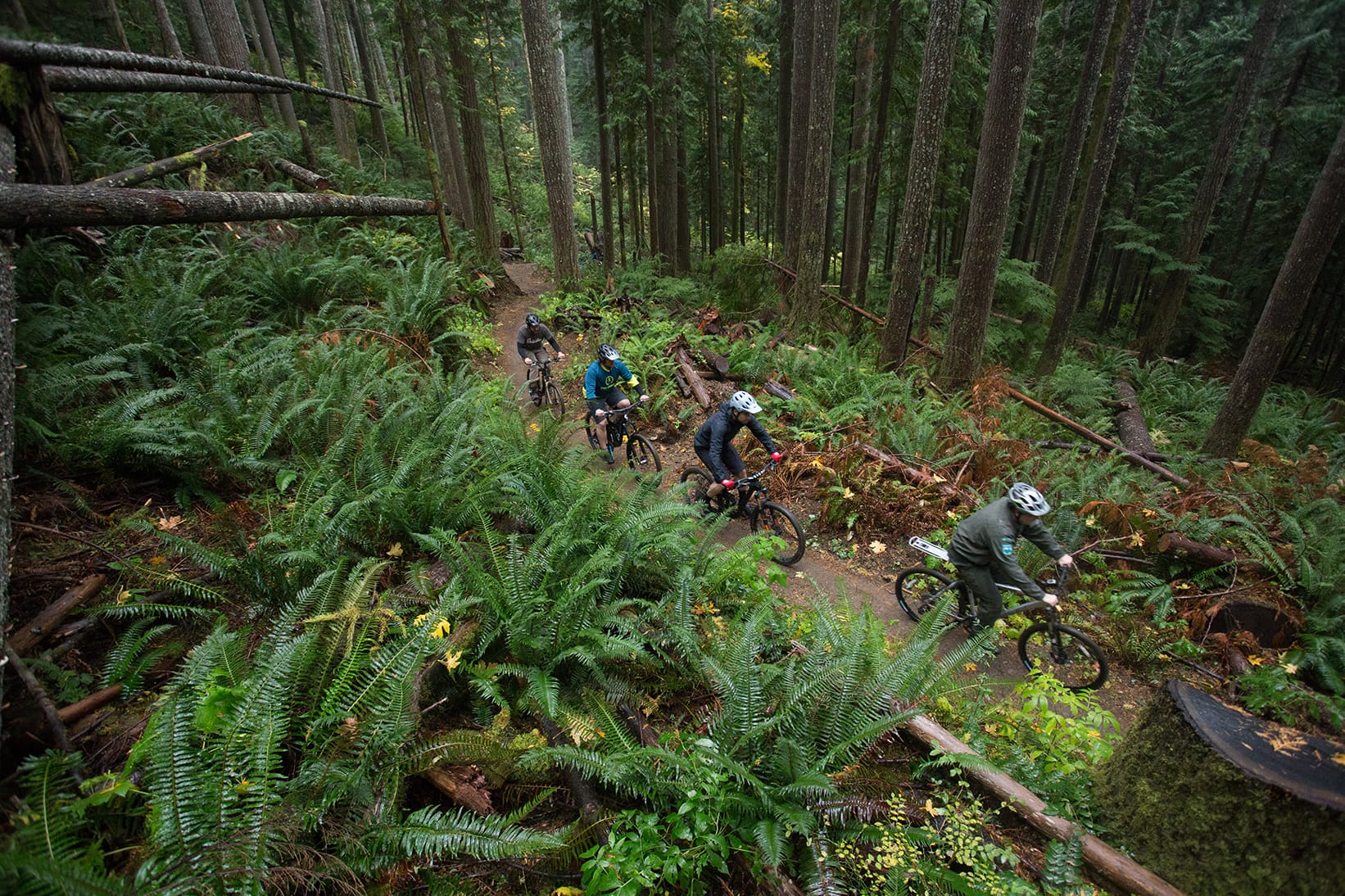New Backcountry Trail Opens at Olallie
The newly completed Olallie Trail is a 9.2-mile, challenging long-distance mountain biking trail—also available for hiking and equestrian use—with several sweeping views of the Snoqualmie Valley and surrounding mountains. The trail winds through older forest stands, ridges, and along segments of abandoned logging road grade-to-trail conversion, gaining approximately 2,700’ elevation. The route traverses the upper reaches of Olallie State Park, managed by the Washington State Parks & Recreation Commission (State Parks), with the eastern half mile ending on United States Forest Service (USFS) land near Change Lake. View trail map.
This exciting new trail opportunity is the culmination of the Olallie Area Mountain Bike Trail Study, which began in 2002, resulting in reconnaissance, feasibility, and the vision for a future trail network across more than 15,000 acres of public lands. As part of this plan, the Olallie Trail provides an over 22-mile distance out-and-back trail experience, when combined with the John Wayne Pioneer Trail via Cedar Falls Trailhead. Future trail expansion to the east of Olallie Trail will continue to be explored and potentially implemented, if funding sources are secured.
From the start, the project has been a model for a new, partnership-based way of building trails. State Parks collaborated with Washington State Department of Natural Resources for trail design and project management assistance, and worked with both Evergreen Mountain Bike Alliance (Evergreen) and the Mountains to Sound Greenway Trust to construct the trail. The City of Seattle Cedar River Watershed and USFS provided project support as well. Evergreen crews built approximately 4.9 miles of the western section of trail with some volunteer support, while the Greenway Trust developed approximately 4.3 miles of the eastern trail segment.

Visitors can most easily access the new trail by parking at the Cedar Falls Trailhead and traveling the John Wayne Pioneer Trail east for two miles to reach the trail entry. An alternate access point is from the Homestead Valley Trailhead, traveling west along the John Wayne Pioneer Trail for three miles to the junction with the Olallie Trail.
Funding for this project was provided from a grant awarded to State Parks through the Washington Wildlife & Recreation Program, administered by the Recreation & Conservation Office.
As the winter season approaches with more consistent precipitation and potential for snow on upper elevation trail segments, visitors should carefully consider the weather and resulting trail conditions before embarking on this trail adventure.





